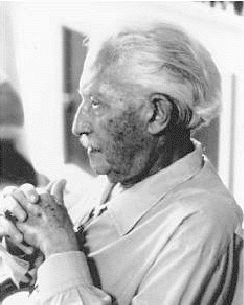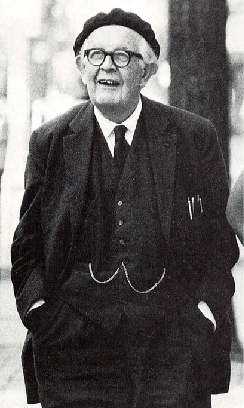
There are many theories regarding how babies and children grow and develop into happy, healthy adults. We explore several of these theories in this section.
Sigmund Freud (1856–1939) believed that personality develops during early childhood. For Freud, childhood experiences shape our personalities and behavior as adults. Freud viewed development as discontinuous; he believed that each of us must pass through a series of stages during childhood, and that if we lack proper nurturance and parenting during a stage, we may become stuck, or fixated, in that stage. Freud’s stages are called the stages of psychosexual development . According to Freud, children’s pleasure-seeking urges are focused on a different area of the body, called an erogenous zone, at each of the five stages of development: oral, anal, phallic, latency, and genital.
While most of Freud’s ideas have not found support in modern research, we cannot discount the contributions that Freud has made to the field of psychology. Psychologists today dispute Freud’s psychosexual stages as a legitimate explanation for how one’s personality develops, but what we can take away from Freud’s theory is that personality is shaped, in some part, by experiences we have in childhood. These stages are discussed in detail in the chapter on personality.
Erik Erikson (1902–1994) ([link]), another stage theorist, took Freud’s theory and modified it as psychosocial theory. Erikson’s psychosocial development theory emphasizes the social nature of our development rather than its sexual nature. While Freud believed that personality is shaped only in childhood, Erikson proposed that personality development takes place all through the lifespan. Erikson suggested that how we interact with others is what affects our sense of self, or what he called the ego identity.
Erik Erikson proposed the psychosocial theory of development. In each stage of Erikson’s theory, there is a psychosocial task that we must master in order to feel a sense of competence.

Erikson proposed that we are motivated by a need to achieve competence in certain areas of our lives. According to psychosocial theory, we experience eight stages of development over our lifespan, from infancy through late adulthood. At each stage there is a conflict, or task, that we need to resolve. Successful completion of each developmental task results in a sense of competence and a healthy personality. Failure to master these tasks leads to feelings of inadequacy.
According to Erikson (1963), trust is the basis of our development during infancy (birth to 12 months). Therefore, the primary task of this stage is trust versus mistrust. Infants are dependent upon their caregivers, so caregivers who are responsive and sensitive to their infant’s needs help their baby to develop a sense of trust; their baby will see the world as a safe, predictable place. Unresponsive caregivers who do not meet their baby’s needs can engender feelings of anxiety, fear, and mistrust; their baby may see the world as unpredictable.
As toddlers (ages 1–3 years) begin to explore their world, they learn that they can control their actions and act on the environment to get results. They begin to show clear preferences for certain elements of the environment, such as food, toys, and clothing. A toddler’s main task is to resolve the issue of autonomy versus shame and doubt, by working to establish independence. This is the “me do it” stage. For example, we might observe a budding sense of autonomy in a 2-year-old child who wants to choose her clothes and dress herself. Although her outfits might not be appropriate for the situation, her input in such basic decisions has an effect on her sense of independence. If denied the opportunity to act on her environment, she may begin to doubt her abilities, which could lead to low self-esteem and feelings of shame.
Once children reach the preschool stage (ages 3–6 years), they are capable of initiating activities and asserting control over their world through social interactions and play. According to Erikson, preschool children must resolve the task of initiative versus guilt. By learning to plan and achieve goals while interacting with others, preschool children can master this task. Those who do will develop self-confidence and feel a sense of purpose. Those who are unsuccessful at this stage—with their initiative misfiring or stifled—may develop feelings of guilt. How might over-controlling parents stifle a child’s initiative?
During the elementary school stage (ages 6–12), children face the task of industry versus inferiority. Children begin to compare themselves to their peers to see how they measure up. They either develop a sense of pride and accomplishment in their schoolwork, sports, social activities, and family life, or they feel inferior and inadequate when they don’t measure up. What are some things parents and teachers can do to help children develop a sense of competence and a belief in themselves and their abilities?
In adolescence (ages 12–18), children face the task of identity versus role confusion. According to Erikson, an adolescent’s main task is developing a sense of self. Adolescents struggle with questions such as “Who am I?” and “What do I want to do with my life?” Along the way, most adolescents try on many different selves to see which ones fit. Adolescents who are successful at this stage have a strong sense of identity and are able to remain true to their beliefs and values in the face of problems and other people’s perspectives. What happens to apathetic adolescents, who do not make a conscious search for identity, or those who are pressured to conform to their parents’ ideas for the future? These teens will have a weak sense of self and experience role confusion. They are unsure of their identity and confused about the future.
People in early adulthood (i.e., 20s through early 40s) are concerned with intimacy versus isolation. After we have developed a sense of self in adolescence, we are ready to share our life with others. Erikson said that we must have a strong sense of self before developing intimate relationships with others. Adults who do not develop a positive self-concept in adolescence may experience feelings of loneliness and emotional isolation.
When people reach their 40s, they enter the time known as middle adulthood, which extends to the mid-60s. The social task of middle adulthood is generativity versus stagnation. Generativity involves finding your life’s work and contributing to the development of others, through activities such as volunteering, mentoring, and raising children. Those who do not master this task may experience stagnation, having little connection with others and little interest in productivity and self-improvement.
From the mid-60s to the end of life, we are in the period of development known as late adulthood. Erikson’s task at this stage is called integrity versus despair. He said that people in late adulthood reflect on their lives and feel either a sense of satisfaction or a sense of failure. People who feel proud of their accomplishments feel a sense of integrity, and they can look back on their lives with few regrets. However, people who are not successful at this stage may feel as if their life has been wasted. They focus on what “would have,” “should have,” and “could have” been. They face the end of their lives with feelings of bitterness, depression, and despair. [link] summarizes the stages of Erikson’s theory.
| Stage | Age (years) | Developmental Task | Description |
|---|---|---|---|
| 1 | 0–1 | Trust vs. mistrust | Trust (or mistrust) that basic needs, such as nourishment and affection, will be met |
| 2 | 1–3 | Autonomy vs. shame/doubt | Develop a sense of independence in many tasks |
| 3 | 3–6 | Initiative vs. guilt | Take initiative on some activities—may develop guilt when unsuccessful or boundaries overstepped |
| 4 | 7–11 | Industry vs. inferiority | Develop self-confidence in abilities when competent or sense of inferiority when not |
| 5 | 12–18 | Identity vs. confusion | Experiment with and develop identity and roles |
| 6 | 19–29 | Intimacy vs. isolation | Establish intimacy and relationships with others |
| 7 | 30–64 | Generativity vs. stagnation | Contribute to society and be part of a family |
| 8 | 65– | Integrity vs. despair | Assess and make sense of life and meaning of contributions |
Jean Piaget (1896–1980) is another stage theorist who studied childhood development ([link]). Instead of approaching development from a psychoanalytical or psychosocial perspective, Piaget focused on children’s cognitive growth. He believed that thinking is a central aspect of development and that children are naturally inquisitive. However, he said that children do not think and reason like adults (Piaget, 1930, 1932). His theory of cognitive development holds that our cognitive abilities develop through specific stages, which exemplifies the discontinuity approach to development. As we progress to a new stage, there is a distinct shift in how we think and reason.
Jean Piaget spent over 50 years studying children and how their minds develop.

Piaget said that children develop schemata to help them understand the world. Schemata are concepts (mental models) that are used to help us categorize and interpret information. By the time children have reached adulthood, they have created schemata for almost everything. When children learn new information, they adjust their schemata through two processes: assimilation and accommodation. First, they assimilate new information or experiences in terms of their current schemata: assimilation is when they take in information that is comparable to what they already know. Accommodation describes when they change their schemata based on new information. This process continues as children interact with their environment.
For example, 2-year-old Blake learned the schema for dogs because his family has a Labrador retriever. When Blake sees other dogs in his picture books, he says, “Look mommy, dog!” Thus, he has assimilated them into his schema for dogs. One day, Blake sees a sheep for the first time and says, “Look mommy, dog!” Having a basic schema that a dog is an animal with four legs and fur, Blake thinks all furry, four-legged creatures are dogs. When Blake’s mom tells him that the animal he sees is a sheep, not a dog, Blake must accommodate his schema for dogs to include more information based on his new experiences. Blake’s schema for dog was too broad, since not all furry, four-legged creatures are dogs. He now modifies his schema for dogs and forms a new one for sheep.
Like Freud and Erikson, Piaget thought development unfolds in a series of stages approximately associated with age ranges. He proposed a theory of cognitive development that unfolds in four stages: sensorimotor, preoperational, concrete operational, and formal operational ([link]).
| Age (years) | Stage | Description | Developmental issues |
|---|---|---|---|
| 0–2 | Sensorimotor | World experienced through senses and actions | Object permanence |